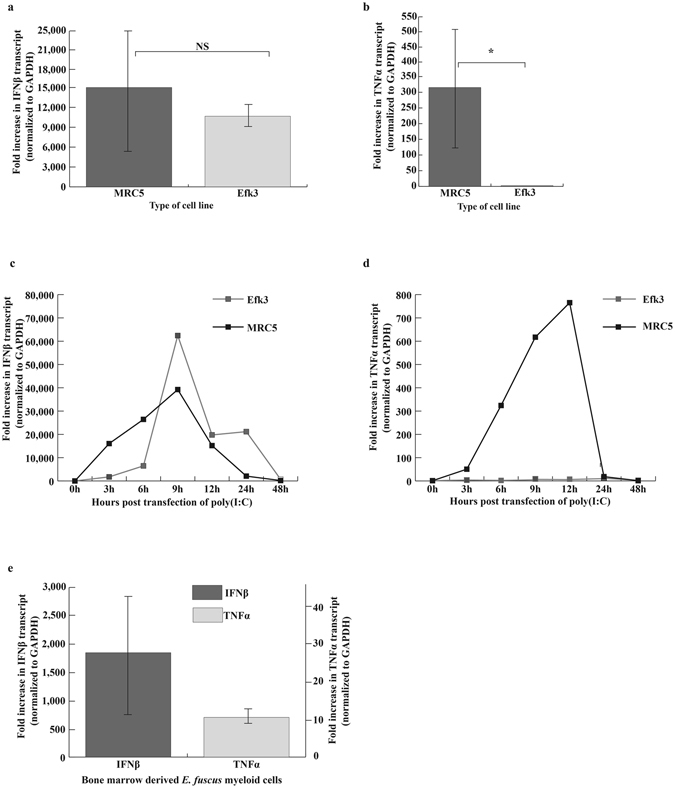Figure 2.

Efk3 cells do not express high levels of TNFα transcripts in response to poly(I:C). We transfected human fibroblasts, bat kidney (Efk3) and bat myeloid cells with poly(I:C), a known TLR3 stimulant, and studied the expression of IFNβ and TNFα relative to mock transfected cells. (a) Both MRC5 and Efk3 cells responded to poly(I:C) by expressing IFNβ transcripts (mean ± SD, n = 3, P = 0.05). (b) MRC5 cells responded to poly(I:C) by several hundred fold expression of TNFα transcripts but Efk3 cells expressed significantly lower levels of TNFα transcripts (mean ± SD, n = 3, P = 0.021). (c) Transcripts for IFNβ in MRC5 and Efk3 cells were quantified at several time points after poly(I:C) treatment. Both MRC5 and Efk3 cells showed highest IFNβ transcript levels 9 h post poly(I:C) treatment. (d) Transcripts for TNFα in MRC5 and Efk3 cells were quantified at several time points after poly(I:C) treatment. MRC5 cells showed highest TNFα transcripts 12 h post poly(I:C) treatment but Efk3 cells did not express TNFα transcripts to relatively comparable levels. (e) Big brown bat bone marrow derived myeloid cells expressed IFNβ transcripts to 1700 fold higher post poly(I:C) treatment but TNFα transcripts were expressed to an average of only 11 fold higher over mock treated cells (mean ± SD, n = 3). Results are expressed as fold increases over mock-treated cells normalized to GAPDH values (Materials and Methods). Statistical significance was calculated using two-tailed Mann-Whitney U test for two independent samples. *P < 0.05, NS = not significant. n is the number of independent experiments. SD = standard deviation.
